The 30 Best Downtowns in Alabama: Guide to the State’s Most Vibrant Urban Centers

Alabama’s downtown areas showcase the state’s unique blend of Southern charm, rich history, and modern development. From coastal communities to mountain towns, these historic districts and revitalized main streets offer visitors and residents authentic experiences that reflect the heart of Alabama culture. Each downtown district presents its own character through local shops, restaurants, cultural attractions, and architectural heritage.
These 30 downtowns represent the most vibrant and well-preserved commercial districts across Alabama, featuring everything from antebellum architecture to contemporary entertainment venues.
The communities range from small historic squares anchored by century-old courthouses to larger urban centers with mixed-use developments and waterfront districts. Many of these areas have undergone significant revitalization efforts that balance preservation of historical elements with modern amenities and economic opportunities.
Here are the 30 best downtowns in Alabama:
1. Fairhope Downtown
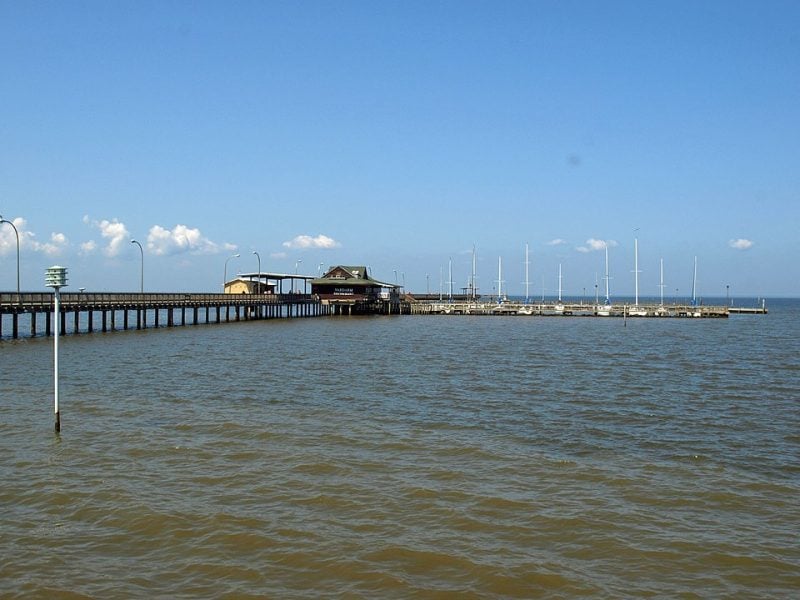
Fairhope’s downtown district sits along the eastern shore of Mobile Bay in Baldwin County. The area features several walkable blocks lined with independent boutiques and art galleries housed in historic buildings.
The main street leads directly to the waterfront and Municipal Pier. This pier extends into Mobile Bay and serves as a popular sunset viewing spot for visitors and locals.
Downtown Fairhope maintains its historic charm while offering modern shopping and dining experiences. The area includes small shops, restaurants, and eateries that reflect Southern cuisine and local culture.
The downtown district is part of Fairhope’s Historic District, which preserves the town’s original character. Live oak trees and seasonal flowers line the streets throughout the area.
Visitors can walk through the downtown core and access the waterfront easily. The district combines historic architecture with contemporary businesses, creating a blend of old and new elements.
2. Athens Historic District
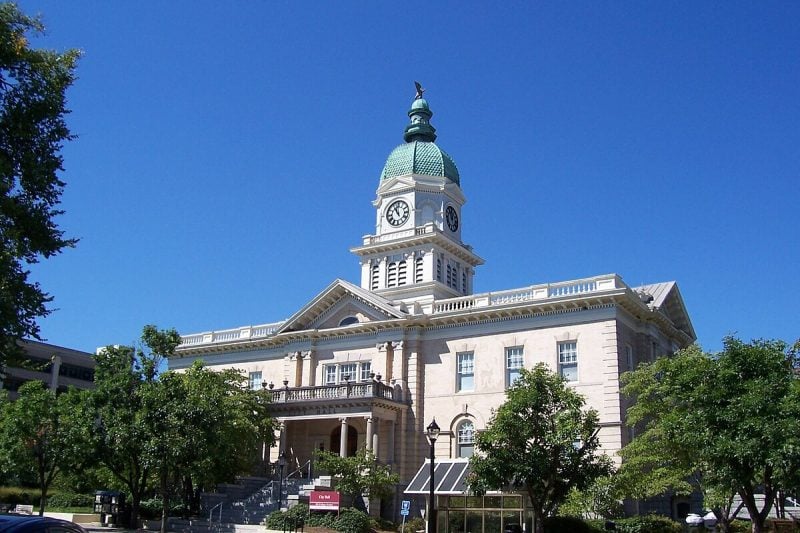
Athens Historic District centers around the picturesque courthouse square in downtown Athens. The area features four distinct historic districts containing homes dating back to the early 1800s.
Visitors can explore dozens of antebellum and Reconstruction-era houses clearly visible from sidewalks. The historic districts include the Beaty, Houston, Athens State College, and Downtown areas.
The courthouse square at 100 N Beaty Street serves as the heart of downtown Athens. Historical markers are placed around the square providing educational context for visitors.
Free walking and driving tour brochures are available at the Athens-Limestone County Visitors Center. The area showcases beautiful historic homes, churches, and Athens State University buildings.
The district offers easy access to view well-preserved streetscapes and architecture. The compact layout makes it simple for visitors to explore multiple historic sites on foot within a concentrated area.
3. Madison Town Center

Madison Town Center represents a modern approach to downtown development in Alabama. The walkable community was designed by Andres Duany, a renowned new urbanist planner.
The center features four distinct districts. The Exchange, The Heights, The Commons, and The West End each offer unique characteristics and amenities.
Visitors find thoughtful neighborhood environments throughout the development. The districts connect seamlessly to create a cohesive urban experience.
Dining options continue to expand across the town center. Shopping venues provide variety for different tastes and budgets.
Entertainment destinations add vibrancy to the area. The design emphasizes pedestrian-friendly streets and community gathering spaces.
Madison’s location just over 11 miles west of Huntsville makes it easily accessible. The town center serves as a focal point for this growing Alabama community.
4. Eufaula Historic Downtown
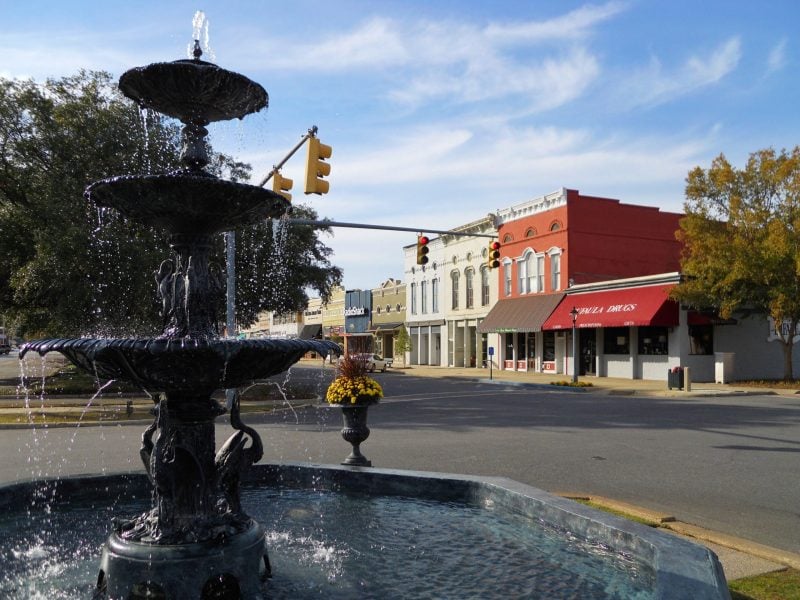
Eufaula’s historic downtown showcases Southern charm with its well-preserved antebellum architecture and tree-lined streets. The downtown area has experienced significant restoration over the past 18 years through the Main Street Alabama initiative.
The MacMonnies’ Fountain serves as a central landmark at the intersection of Randolph Avenue and Broad Street. This three-tiered, wrought-iron fountain has anchored the downtown district since the late 1800s.
Local shops, restaurants, and art galleries fill the vibrant downtown area. The storefront occupancy has increased by 30% due to ongoing revitalization efforts.
The city hosts over 300 events annually, including the popular Eufaula Pilgrimage that highlights historic homes and gardens. Main Street Eufaula organizes special events like the Pilgrimage Antiques Show and Garden Treasures carriage rides.
5. Florence Courtyard Square
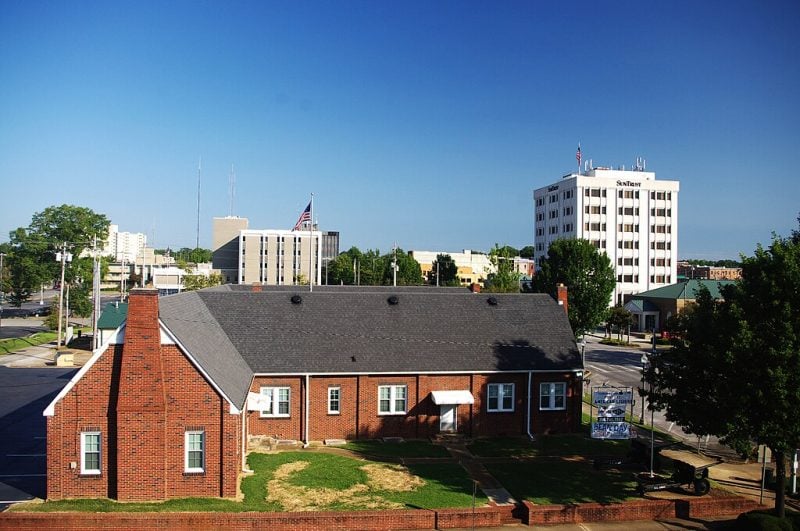
Florence Courtyard Square serves as the centerpiece of downtown Florence’s historic district. The square features well-preserved architecture that dates back to the late 1800s and early 1900s.
Visitors can explore local boutiques, cafes, and specialty shops housed within the square’s historic buildings. The area maintains its original charm while offering modern amenities and services.
The square hosts various community events throughout the year, including festivals and markets. These gatherings bring together locals and tourists in the heart of downtown Florence.
Court Street runs directly through the area, providing easy access to restaurants and shopping. The walkable layout makes it simple to explore multiple businesses in a single visit.
Florence Courtyard Square represents the successful preservation of Alabama’s small-town heritage while supporting local commerce and community life.
6. Monroeville Downtown Square
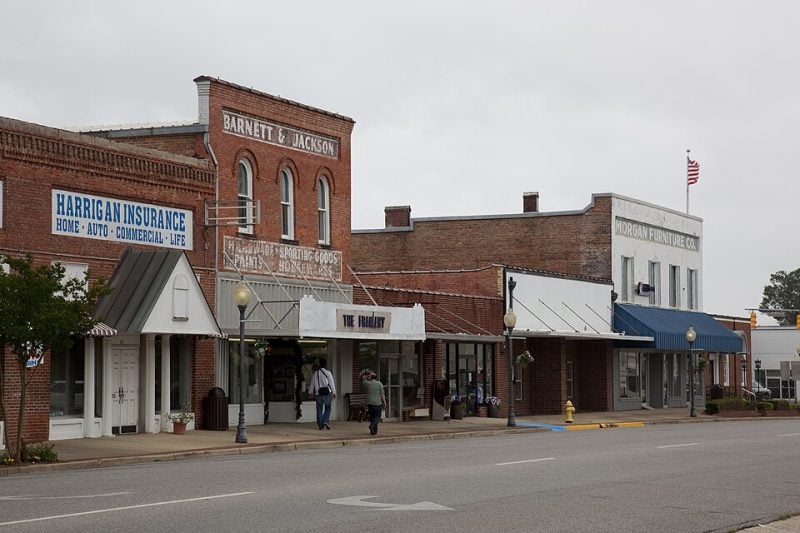
The Monroeville Downtown Historic District centers around the courthouse square, creating a charming focal point for the community. This 40-acre historic district showcases multiple architectural styles including Classical Revival and American Craftsman designs.
The courthouse square serves as the heart of downtown Monroeville’s commercial and social activity. Visitors can explore specialty shops, restaurants, and historic buildings that line the streets surrounding the square.
The district boundaries include Claiborne Street, Alabama Avenue, Pineville Road, and Mount Pleasant Avenue. These streets contain well-preserved examples of historic commercial and residential architecture.
Monroeville earned recognition as one of Alabama’s towns with the best downtown areas. The square’s historic character and walkable layout make it an attractive destination for both residents and tourists exploring Alabama’s small-town charm.
7. Cullman Historic Downtown
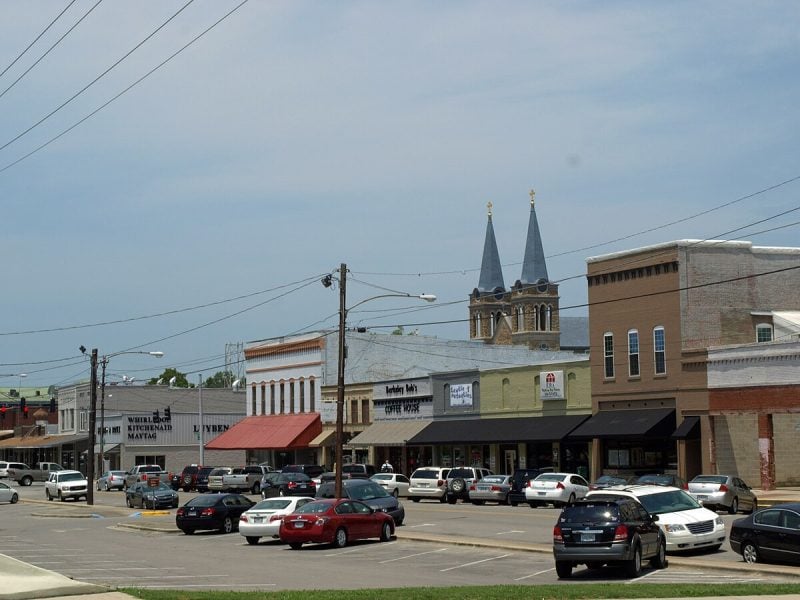
Cullman’s downtown district showcases remarkable architectural preservation from the 1870s to 1910s era. The area features handsome two-story commercial buildings and historic structures that reflect the town’s railroad heritage.
The Cullman Downtown Commercial Historic District represents the vision of founder John G. Cullmann, who established the community in 1873. Early development centered around the Louisville and Nashville Railroad depot, which served as the town’s commercial hub.
Downtown Cullman has experienced a successful renaissance that balances historic charm with modern amenities. The district now houses specialty shops, boutique stores, and restaurants within classic storefronts that preserve the area’s architectural character.
The historic train depot, built in 1913 in Pueblo-style stucco, stands as a significant landmark. Visitors can explore the area through candlelight walking tours that highlight the district’s historic significance and architectural details.
8. Huntsville Downtown
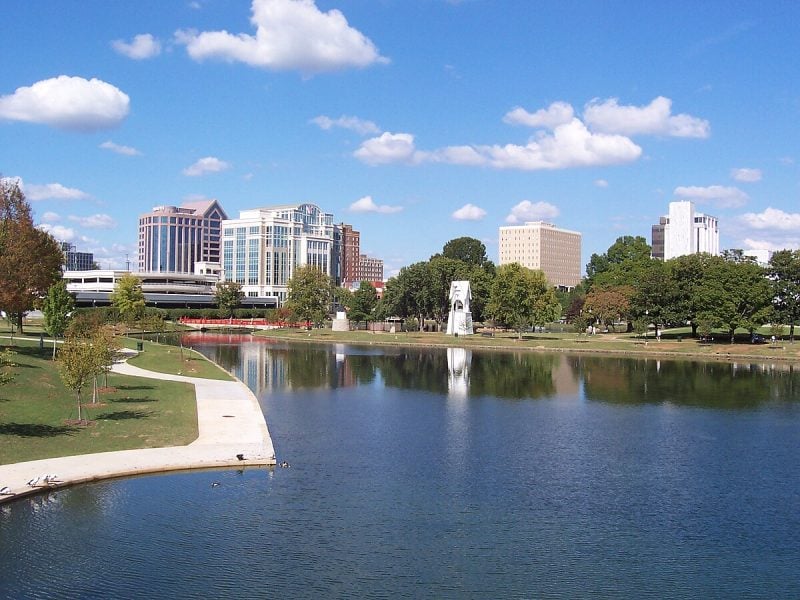
Downtown Huntsville stands as the birthplace of Alabama’s Rocket City. The area centers around a large public square surrounded by 19th-century architecture.
The district features the historic First National Bank building from 1835 on West Side Square. Two residential historic districts sit within walking distance of the main square.
VBC-City Center anchors the modern entertainment district. Five Points and Old Town offer additional historic neighborhoods to explore.
The downtown core provides diverse dining options and unique shopping experiences. Local attractions include museums, parks, and art installations throughout the area.
Monte Sano offers elevated city views from above the downtown district. Several rooftop bars and restaurants provide urban vistas from street level.
The median home price in downtown Huntsville reaches $425,242. This places the area above the national median for urban residential properties.
9. Birmingham Railroad Park Area

Railroad Park transforms 19 acres of downtown Birmingham into a vibrant community gathering space. The park sits between 14th and 18th Streets along 1st Avenue South, connecting downtown with Southside and the UAB campus.
Known as “Birmingham’s Living Room,” the park celebrates the city’s industrial and railroad heritage. Visitors can enjoy a lake, jogging trails, and playground facilities within the green space.
The park hosts concerts, cultural events, and family activities throughout the year. A large historical display chronicles Birmingham’s railroad history, adding educational value to recreational visits.
Railroad Park serves as a catalyst for downtown revitalization. The area attracts new apartment developments and office spaces, contributing to Birmingham’s urban renewal efforts.
This 8-block green space successfully converted former industrial railroad land into a thriving downtown destination that serves both locals and tourists.
10. Decatur Waterfront Downtown
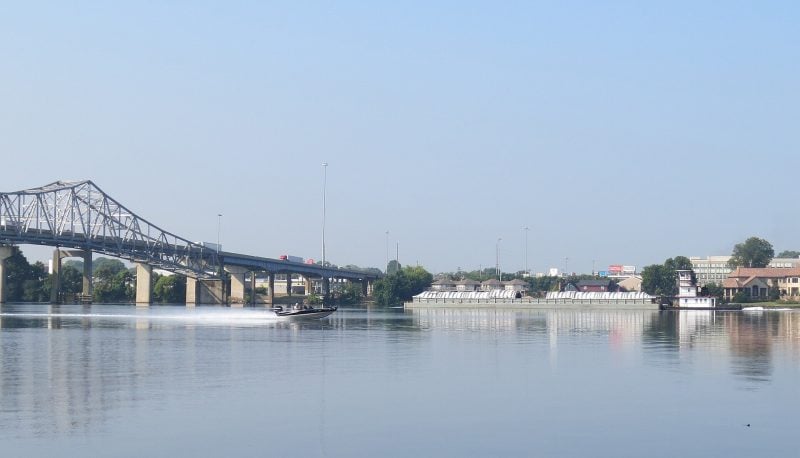
Decatur’s downtown sits along the Tennessee River, creating a scenic waterfront setting for visitors and residents. The area features two distinct historic districts connected by walkable streets lined with restored buildings from the late 1800s and early 1900s.
The Old State Bank building anchors the northern section of downtown. This 190-year-old structure serves as a historic landmark and museum, showcasing the area’s banking heritage from 1833.
The Princess Theatre stands as an iconic venue in the southern downtown district. This historic theater continues to host performances and cultural events for the community.
Bank Street Shopping District offers unique retail experiences in the city’s oldest commercial area. Visitors can explore local shops, restaurants, and entertainment venues within walking distance of the riverfront.
The Cook Museum of Natural Science provides hands-on learning experiences downtown. This modern facility attracts families with interactive exhibits and educational programs about natural sciences.
11. Muscle Shoals Main Street
Main Street Muscle Shoals offers visitors a superior downtown shopping and entertainment experience. The area features a mix of local businesses, restaurants, and cultural attractions that showcase the city’s unique character.
The downtown district sits along the Tennessee River in northern Alabama. This location provides easy access to both urban amenities and natural beauty. Visitors can explore local shops and dining establishments within walking distance of each other.
Muscle Shoals is famous for its music history and recording studios. The downtown area reflects this musical heritage through various venues and attractions. Many world-class artists have recorded in the city’s studios since the 1960s.
The Main Street district serves as a hub for both residents and tourists. It combines historical significance with modern amenities. The walkable layout makes it easy to explore multiple businesses and attractions in a single visit.
12. Gadsden Downtown
Gadsden’s historic downtown district sits along the Coosa River in northeast Alabama at the southern end of Lookout Mountain. The city was incorporated in 1867 and features one of north Alabama’s largest historic downtowns.
The downtown area stretches along Broad Street and Chestnut Street with well-preserved buildings dating back 100 to 140 years. These structures showcase the area’s architectural heritage and contribute to its National Register designation.
Visitors find unique local stores and boutiques throughout the district. The downtown also offers various dining options at local eateries and restaurants.
The area has transformed significantly over the past decade from a quieter district into a vibrant downtown destination. This revitalization has earned recognition as an award-winning downtown district.
Downtown Gadsden provides easy access to nearby Noccalula Falls Park, which features a 90-foot waterfall cascading into Black Creek.
13. Demopolis Historic District
The Demopolis Historic District showcases Alabama’s antebellum heritage through its collection of historic mansions and buildings. Located in the heart of the Black Belt region, this downtown area preserves structures dating back to the early 1800s.
The district sits steps from Demopolis Lake and features well-preserved historic homes, churches, and businesses. Visitors can explore antebellum architecture while walking through tree-lined streets that reflect the area’s rich past.
The Public Square, established in 1819, serves as one of Alabama’s oldest parks and anchors the historic district. This one-block park provides a central gathering place surrounded by historic buildings.
The district includes notable landmarks like Gaineswood, a National Historic Landmark built between 1843-1861. Historic churches and commercial buildings from the early 1900s add to the area’s architectural diversity and historical significance.
14. Tuscaloosa Downtown
Tuscaloosa’s downtown centers around University Boulevard, which stretches from Capitol Park past the University of Alabama. This main thoroughfare serves as the heart of the city’s walkable downtown district.
The area features a mix of shopping, dining, and entertainment options. Visitors can explore various restaurants, retail stores, and cultural attractions within walking distance of each other.
Capitol Park anchors the downtown experience alongside the nearby Federal Courthouse. The compact layout makes it easy to navigate on foot between different attractions and businesses.
The downtown district benefits from its proximity to the University of Alabama campus. This connection brings energy and activity to the area, particularly during the academic year and football season.
Historic elements blend with modern amenities throughout the downtown core. The area maintains its character while offering contemporary shopping and dining experiences for residents and visitors.
15. Opelika Downtown
Opelika’s downtown area centers around its historic railroad heritage dating back to 1854. The district features the restored Opelika Depot and sits on the National Register of Historic Places.
The downtown core offers diverse dining options including local breweries and restaurants. Visitors can explore antique shops and boutiques along the main streets.
The Salem-Shotwell Covered Bridge serves as a notable landmark at Municipal Park’s edge. This early 1900s structure attracts photographers and history enthusiasts.
The Northside Historic District showcases turn-of-the-century homes restored to their original condition. These residential streets provide a glimpse into the area’s architectural past.
Downtown Opelika houses the Museum of East Alabama and the Lee County Courthouse. A craft distillery operates in the district, producing whiskey and other spirits.
The area maintains its small-town character while supporting local businesses and community events.
16. Fort Payne Historic District
Fort Payne’s historic downtown sits at the foot of Lookout Mountain in northeast Alabama. The Main Street Historic District centers around the intersection of Gault Avenue and 1st Street.
The district developed between 1889 and the 1940s during the city’s rapid growth from the hosiery mill industry boom. Commercial and public buildings from the 1920s through World War II define the area’s character.
Historic brick-lined sidewalks connect locally-owned shops and restaurants. The First Presbyterian Church, built in 1875, anchors the district at 300 Grand Avenue North.
Fort Payne Main Street maintains an artsy atmosphere with local galleries and a community theater. The downtown area gained additional recognition as the hometown of country music band Alabama.
The district offers visitors a blend of historic architecture and small-town charm without modern strip mall development.
17. Anniston Downtown
Anniston’s historic downtown area serves as a Main Street America Accredited™ Community, placing it among over 1,600 neighborhoods nationwide focused on preservation-based economic development. The district centers around Noble Street and surrounding blocks.
The downtown features a collection of historic architecture alongside local shops and restaurants. Visitors can explore businesses like Effina’s Downtown and various specialty retailers scattered throughout the area.
The Anniston Museum of Natural History stands as one of the city’s primary attractions. The museum draws visitors interested in natural sciences and educational exhibits.
Downtown Anniston offers dining and entertainment options for both locals and tourists. The area maintains its small-town character while providing modern amenities.
The district benefits from its location in east Alabama, making it accessible for regional visitors exploring the area’s historic landmarks and cultural attractions.
18. Selma Downtown Historic District
Selma’s downtown historic district stands as Alabama’s largest historic district. The area encompasses over 1,250 structures dating from the early 1800s, all listed on the National Historic Register.
The Old Town Historic District covers 323 acres and features buildings from the 1820s onward. Visitors can explore stunning antebellum architecture, including the notable Sturdivant Hall.
The district offers a windshield tour highlighting 116 historic sites throughout the area. Downtown Selma provides shopping, dining, and entertainment experiences along its historic streets.
Four distinct historic districts make up Selma’s preservation efforts: Old Town, Icehouse, Riverview, and Water Avenue. Each district contributes to the city’s comprehensive historical narrative.
The downtown area grew rapidly in the early 1800s as a commercial center. Today, it serves as a living museum where Civil War and Civil Rights history intersect with modern Alabama life.
19. Mobile Downtown and Historic District
Mobile’s downtown serves as Alabama’s coastal cultural hub. The area features seven National Register Historic Districts that showcase the city’s rich architectural heritage.
Downtown streets display over 100-year-old buildings in French and Spanish styles. These structures feature ornate iron-clad balconies that reflect Mobile’s historic character.
The city holds 113 properties and districts on the National Register of Historic Places. Four of these qualify as National Historic Landmarks.
Old Dauphin Way stands as the largest historic district with over 3,000 unique structures. This neighborhood was established as a historic district in 1974.
Mobile functions as the economic center of the central Gulf Coast. The port welcomes ships from around the world while 22,000 workers support regional business operations.
The downtown area combines historic charm with modern amenities. Visitors can explore galleries, restaurants, and entertainment venues throughout the district.
20. Dothan Downtown
Dothan’s downtown district has undergone significant transformation over the past three decades. The area now serves as a vibrant city center in southeastern Alabama.
The downtown core features a mix of historic buildings and modern attractions. Visitors can explore the Dothan Opera House, Federal Building, and G.W. Carver Interpretive Museum.
A 1.7-mile walking tour connects key landmarks throughout the district. The route includes the historic Dothan Dixie Standpipe and the city’s former rail station.
Shopping and dining options line the downtown streets. Local establishments offer regional cuisine and unique retail experiences.
The Wiregrass Museum of Art provides cultural programming for residents and visitors. Historic churches and preserved buildings showcase the area’s architectural heritage.
Downtown Dothan serves as the commercial heart of the “Peanut Capital of the World.” The district balances its agricultural roots with modern urban amenities.
21. Talladega Historic Downtown
Talladega’s historic downtown sits 50 miles east of Birmingham and earned its Main Street Alabama designation in 2022. The city prioritizes economic development while preserving its historic character through strategic community partnerships.
The renowned Silk Stocking District anchors the downtown area as a National Register Historic District since 1979. This 113-acre district showcases 120 contributing properties featuring Queen Anne, Classical Revival, and Colonial Revival architectural styles.
Visitors can explore Victorian-era buildings and American Craftsman structures throughout the walkable downtown core. The historic Talladega Ritz Theater serves as a cultural centerpiece for entertainment and community events.
Downtown Talladega offers shopping and dining experiences along Main Street. The area combines motorsports heritage with preserved 19th-century architecture, creating a unique blend of historical charm and modern amenities for residents and tourists.
22. Alexander City Downtown
Alexander City’s downtown district serves as the heartbeat of the Lake Martin community. The historic area features authentic buildings that showcase over 160 years of heritage.
Visitors can explore “The Square” with its collection of locally-owned boutiques, art galleries, and specialty shops. The downtown area offers superior shopping experiences alongside diverse dining options.
Carlisle’s Drug & Soda Fountain stands as one of Alabama’s oldest soda fountains. This landmark adds to the authentic character that defines the downtown experience.
The district sits strategically between Horseshoe Bend National Military Park and Wind Creek State Park. Downtown Alexander City combines small-town charm with vibrant entertainment options.
Local bars, salons, and restaurants create a welcoming atmosphere for both residents and tourists. The area represents some of the best locally-operated businesses in east-central Alabama.
23. Jackson Historic District
The Jackson Historic District stands as Alabama’s oldest incorporated settlement in Clarke County, founded in 1816. This historic downtown area spans 180 acres and contains 140 contributing buildings that showcase the city’s rich architectural heritage.
Visitors can explore diverse architectural styles including Greek Revival, Queen Anne, Colonial Revival, and regional vernacular designs. The district boundaries roughly follow College Avenue, Forest Avenue, and Carroll Avenue.
The downtown area features the Kate Shepard House and other significant structures listed on the National Register of Historic Places. Heart pine and cypress construction materials reflect the area’s 19th-century building techniques.
Main Street Jackson offers shopping, dining, and entertainment experiences within this historic setting. The combination of preserved architecture and modern amenities creates an authentic Southern downtown atmosphere that attracts both history enthusiasts and casual visitors.
24. Phenix City Downtown
Phenix City’s downtown area sits along the Chattahoochee River on the Alabama-Georgia border. The Main Street district offers a blend of shopping, dining, and entertainment venues that create a vibrant urban experience.
The downtown core features the scenic Phenix City RiverWalk, which provides visitors with riverside views and walking paths. This waterfront attraction serves as a focal point for the district’s recreational activities.
Local businesses line the streets, offering shopping opportunities and restaurant experiences. The downtown area maintains its Southern character while providing modern amenities for residents and visitors.
The district benefits from its unique location, operating on Eastern Time despite being in Alabama. This proximity to Columbus, Georgia creates a cross-border metropolitan feel that distinguishes it from other Alabama downtowns.
Phenix City’s downtown serves as a regional hub for entertainment and commerce along the Chattahoochee River corridor.
25. Jasper Downtown
Downtown Jasper offers visitors a blend of shopping, dining, and entertainment options in a walkable historic setting. The main street district features local boutiques, gift shops, and jewelry stores that cater to diverse shopping preferences.
The downtown area houses several bakeries, breweries, and restaurants that provide varied dining experiences. Visitors can explore these establishments while strolling through the pedestrian-friendly streets.
Jasper’s downtown district maintains its historic charm while offering modern amenities. The area serves as a hub for both residents and tourists seeking retail therapy and culinary experiences.
The compact layout allows visitors to easily navigate between different attractions on foot. This accessibility makes downtown Jasper an appealing destination for those who prefer concentrated entertainment and shopping districts.
26. Sylacauga Historic District
The Sylacauga Historic District earned its place on the National Register of Historic Places in 2004. This downtown area showcases a collection of late-19th to mid-20th century commercial buildings.
The district represents over 60 years of Sylacauga’s commercial history. The Anniston and Atlantic Railroad first arrived on December 1, 1886, spurring the area’s development.
Visitors can explore the charming downtown streets lined with historic architecture. The buildings reflect the town’s heritage and marble industry legacy.
The Sylacauga Historical Commission works to preserve the district’s cultural significance. They established a voluntary design review process to maintain the area’s historic character.
Local shops, eateries, and galleries occupy many of the historic structures. The district offers visitors a glimpse into Alabama’s small-town commercial past while providing modern amenities.
27. Tuscumbia Town Center
Tuscumbia’s downtown area sits between Spring Park and the Courthouse Square area. The district features dozens of businesses along landscaped streets that serve both locals and visitors.
The town center includes multiple restaurants and retail shops. Boutiques line the main streets alongside dining establishments that cater to various tastes.
Historic attractions anchor the downtown experience. Visitors can explore Ivy Green, the birthplace of Helen Keller, and the historic Colbert County Courthouse within walking distance.
Spring Park provides green space adjacent to the commercial district. The park offers recreation opportunities and hosts community events throughout the year.
The downtown area maintains its historic character while supporting modern commerce. Well-preserved buildings house contemporary businesses that create a thriving environment for shopping and entertainment.
28. Clanton Downtown
Clanton’s downtown district centers around Main Street, offering visitors a blend of shopping, dining, and entertainment options. The area features local shops and restaurants that reflect the town’s character and community spirit.
The downtown invites exploration with its walkable layout and variety of businesses. Visitors can browse unique stores and enjoy meals at local establishments that showcase regional flavors.
Clanton has gained recognition for its thriving peach industry, which influences the local economy and adds to the town’s identity. This agricultural heritage is evident throughout the downtown area.
The downtown serves as a hub for the community, providing both locals and tourists with access to essential services and entertainment. The district maintains its small-town charm while offering modern amenities.
Historic elements blend with contemporary businesses to create an authentic Alabama downtown experience. The area reflects Clanton’s role as a regional destination for visitors exploring central Alabama.
29. Guntersville Historic Downtown
Guntersville’s historic downtown sits along the Tennessee River in northeastern Alabama. The district encompasses the central business district and includes well-preserved historic buildings.
The downtown area spans approximately two miles of dining and local shopping opportunities. Visitors can walk from shop to shop while enjoying scenic water views just hundreds of yards away.
Antique stores and vintage shops attract collectors and treasure hunters to the area. Local boutiques offer unique gifts and handmade items from regional artisans.
The city harbor’s proximity to Gunter Avenue makes downtown easily accessible by both land and water. Restaurants with waterfront dining provide meals with lake views.
Live music venues and local art galleries add cultural elements to the shopping district. The mountain-lake setting creates an appealing backdrop for the historic commercial area.
30. Albertville Downtown
Albertville’s historic downtown sits in the heart of Sand Mountain, offering visitors a charming blend of shops, restaurants, and entertainment venues. The area has transformed into what locals call the Downtown MTN District, serving as the city’s designated arts and entertainment destination.
Main Street Albertville provides a walkable shopping experience with local boutiques and dining establishments. The historic architecture adds character to the streetscape, making it an appealing destination for both residents and tourists.
The downtown area connects to scenic Tennessee River walks, extending recreational opportunities beyond the commercial district. Visitors can explore the historic downtown district, which features well-preserved buildings that reflect the city’s heritage.
The MTN District regularly hosts arts and entertainment events, creating a vibrant community gathering place. This downtown area serves as a central hub for Albertville’s cultural activities and social events.
Historical Significance of Alabama’s Downtowns
Alabama’s downtowns serve as living museums that chronicle the state’s evolution from antebellum commerce centers to modern cultural hubs. These historic districts preserve architectural treasures while adapting to contemporary needs through thoughtful restoration projects.
Preservation and Revitalization Efforts
The Alabama Historical Commission established the Alabama Register of Landmarks and Heritage to protect the state’s most significant downtown districts. This program recognizes buildings, sites, and cultural landscapes that maintain historic integrity.
Key preservation initiatives include:
- Documentation of historic structures and districts
- Incentives for property owners to maintain original architecture
- Guidelines for appropriate renovations and adaptive reuse
Many downtowns have transformed abandoned buildings into thriving businesses. Former banks now house restaurants, while historic theaters host live performances and community events.
Athens exemplifies successful preservation efforts with its Alabama Veterans Museum & Archives. The facility occupies a historic building while serving as a significant cultural attraction for visitors and residents.
Local governments often partner with preservation organizations to secure funding for restoration projects. These collaborations ensure that downtown areas maintain their character while attracting new businesses and residents.
Architectural Styles and Landmarks
Alabama’s downtowns showcase diverse architectural periods spanning over 150 years. Victorian-era commercial buildings feature ornate facades with decorative ironwork and large storefront windows.
Common architectural elements include:
- Neoclassical buildings with columns and pediments
- Art Deco structures from the 1920s and 1930s
- Greek Revival elements in courthouse squares
- Italianate commercial buildings with arched windows
Many downtowns center around historic courthouse squares that anchor the commercial district. These public spaces often feature monuments and landscaping that reflect local history and community values.
Civil Rights Movement sites hold particular significance in several Alabama downtowns. These landmarks provide educational opportunities while honoring the state’s role in American history.
Historic main streets typically feature continuous building facades that create intimate pedestrian environments. Original brick construction and wooden details remain visible in many preserved structures.
Economic and Cultural Impact
Alabama’s downtowns serve as economic engines that generate millions in revenue while fostering vibrant cultural scenes. These areas attract new businesses, create jobs, and host events that bring communities together.
Small Business Growth
Main Street Alabama communities have documented substantial business development since 2020. Wetumpka alone welcomed nearly 30 new businesses, with additional ventures planned for opening.
Pop-up shops represent a growing trend in rural Alabama downtowns. These temporary retail spaces allow entrepreneurs to test concepts with lower overhead costs. Many transition into permanent storefronts after proving successful.
Key Business Categories Thriving:
- Restaurants and cafes
- Boutique retail stores
- Art galleries and studios
- Professional services
- Entertainment venues
Property renovations accompany new business openings across the state. Historic buildings receive multimillion-dollar investments that preserve architectural character while meeting modern commercial needs.
Food trucks and outdoor seating create lively street cultures in cities like Montgomery. These additions enhance the pedestrian experience and encourage longer visits from residents and tourists.
Community Events and Festivals
Art festivals anchor cultural programming in Alabama’s revitalized downtowns. These events showcase local talent while attracting visitors from surrounding areas.
Green spaces integrated into downtown areas provide venues for outdoor concerts and community gatherings. The design creates multipurpose areas that serve daily recreational needs and special events.
Popular Event Types:
- Music festivals featuring local and regional artists
- Food festivals highlighting regional cuisine
- Art shows displaying works from Alabama artists
- Seasonal celebrations marking holidays and local traditions
Social media buzz amplifies event promotion and attendance. Communities use platforms to share real-time updates and create anticipation for upcoming activities.
Entertainment districts transform small downtown areas through coordinated programming. These designated zones concentrate cultural activities and extend operating hours beyond traditional business schedules.





